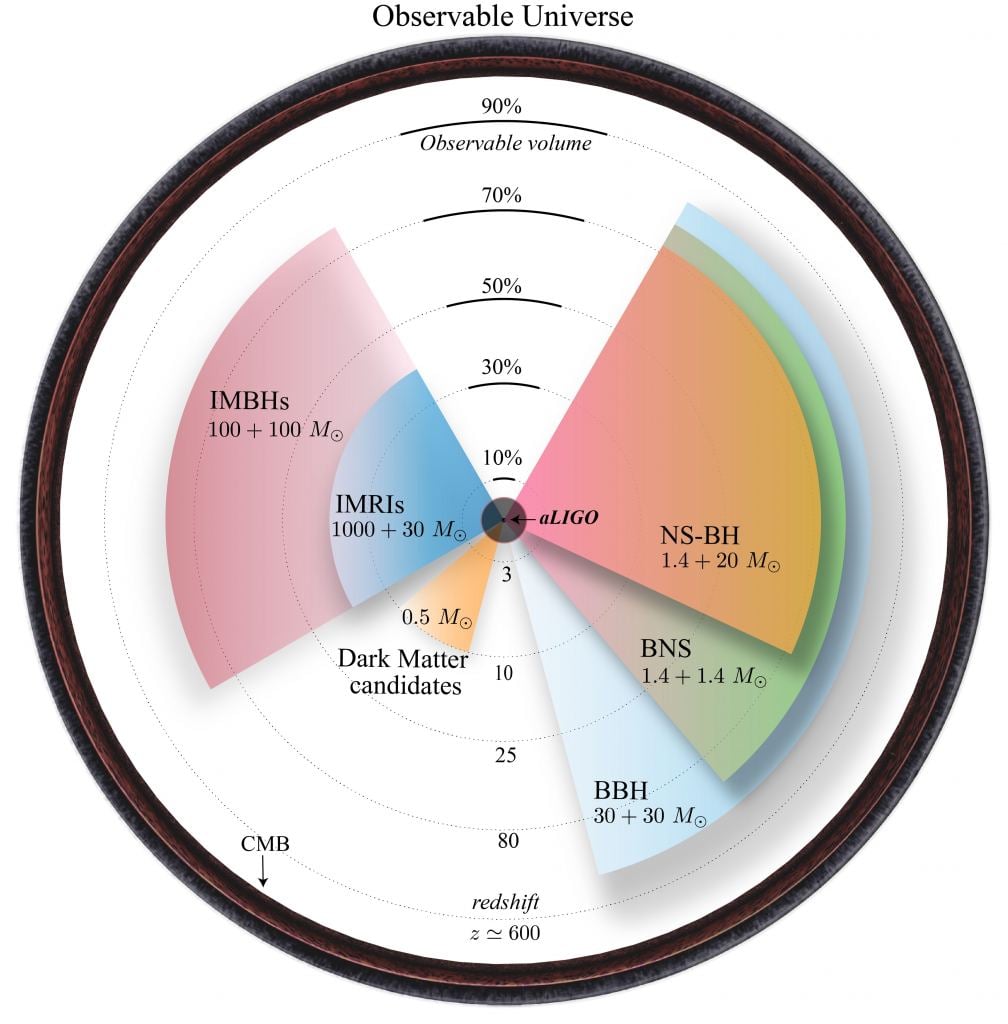Gravitational-wave astronomy is set to revolutionize our understanding of the cosmos. In only a few years it has significantly enhanced our understanding of black holes, but it is still a scientific field in its youth. That means there are still serious limitations to what can be observed.
Currently, all gravitational observatories are based on Earth. This makes the detectors easier to build and maintain, but it also means the observatories are plagued by background noise. Observatories such as LIGO and Virgo work by measuring the distance shift between mirrors as a gravitational wave passes through the observatory. This shift is extremely small. For mirrors placed 4 kilometers apart, the shift is a mere fraction of the width of a proton. The vibrations of a truck driving down a nearby road will shift the mirrors much more than that. So LIGO and Virgo use statistics and models of black hole mergers to distinguish a true signal from a false one.
Because of terrestrial background noise, current observatories focus on the high-frequency gravitational waves (10 - 1000 Hz) generated by black hole mergers. There has been discussion of building a space-based gravitational-wave observatory, such as LISA, which would observe low-frequency gravitational waves, such as those generated by early cosmic inflation. But many gravitational waves are in the intermediate range. To detect these, a recent study proposes building a gravitational-wave observatory on the Moon.
The Moon has long been a coveted location for astronomers. Optical telescopes on the Moon wouldn't suffer from atmospheric blurring, and unlike space-based telescopes such as Hubble and Webb, they wouldn't be limited by the size of your launch rocket. Most of the ideas proposed have been very hypothetical, but as we look towards a human return to the Moon in the next decade they are becoming less so. Already NASA is studying the construction of a radio telescope on the far lunar surface. Building a lunar gravitational-wave observatory would be significantly more challenging, but not impossible.
This recent study proposes a Gravitational-wave Lunar Observatory for Cosmology (GLOC). Rather than worrying about how such an observatory would be constructed, the study instead focuses on the sensitivity and observational limits of such an observatory. As you might expect, a lunar observatory wouldn't suffer from the background vibrations that trouble Earth observatories. As a result, it could have a baseline four times longer than LIGO. This would give it a range on gravitational wave frequencies as low as a tenth of a Hertz. This would allow it to observe everything from stellar-mass binary mergers to those of intermediate-mass black holes.
But it would also be able to observe the same type of mergers as LIGO and Virgo at much greater distances. Distances so far that the gravitational waves have become very red-shifted. If constructed, GLOC would be able to use distant merger events to measure the rate of cosmic expansion across billions of years. This would be perhaps its greatest power because it would allow us to measure the Hubble parameter across much of cosmic history. We would finally learn whether cosmic expansion is part of the structure of spacetime, or whether it varies in time and space.
Of course, the GLOC proposal is purely hypothetical at this point. It will be at least decades before we would be able to build such an observatory. But this study shows that building such a telescope would be worth the effort.
Reference: Jani, Karan, and Abraham Loeb. " Gravitational-wave lunar observatory for cosmology." *Journal of Cosmology and Astroparticle Physics* 2021.06 (2021): 044.
 Universe Today
Universe Today

